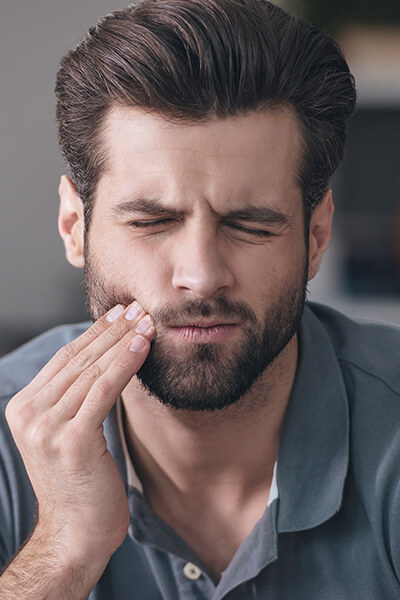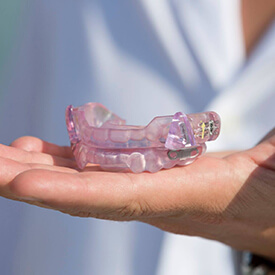
Pain Relieving TMD Therapy in Long Beach AND TORRANCE
A common oral health condition that often goes undiagnosed or is misdiagnosed, temporomandibular joint dysfunction (TMD) can lead to a number of oral health concerns and dramatically impede daily functions as simple as speaking, chewing, and yawning. TMD occurs when the tiny joints connecting the jaw to the skull bone are damaged or strained. The result is painful jaw movement, clicking or grinding sounds when opening and closing the mouth, and impeded jaw movement. Contact Cherry Dental and PCH Dental right away, if you experience any of these warning signs of TMD.
 Diagnosis & Treatment
Diagnosis & Treatment
Before we begin treating TMD, we need to make sure you are suffering from this oral health concern. The temporomandibular joints (TMJ) are tiny, triangular connectors that allow the jaw to move without impediment against the skull bone. When TMD occurs, patients may experience a vast array of seemingly unrelated symptoms, so it’s important to let your dentist know right away if you experience any combination of the following symptoms of TMD:
- Limited mobility or complete inability to open and close the mouth
- Clicking and grounding sounds when opening and closing the mouth
- Pain or discomfort when the jaw is in motion or at rest
- Swelling in the jaw or neck
- Headaches and earaches
- Radiating head, neck, shoulder, and back pain
 Equilibration/Occlusal Adjustments
Equilibration/Occlusal Adjustments
Our first course of action will be determining the cause of your TMD. In some cases, TMD is temporary and caused by jaw clenching or grinding related to stress. Some patients experience TMD due to a misaligned bite. When teeth don’t fit together properly, the result is uneven pressure on different parts of the smile. Understandably, this can lead to strain or damage to the jaw joints. When this happens, we need to correct the way the jaw aligns in order to relieve pain, restore jaw function, and improve oral health. We begin by asking you to perform some simple daily stretches and exercises. If this is ineffective, we may need to progress to orthodontics like braces or retainers to adjust the jaw.
 Occlusal Splints
Occlusal Splints
Similar to custom crafted nightguards we create for our patients suffering from bruxism, occlusal splints are worn during sleep to adjust the jaw to its most comfortable resting position. This reduces strain on the TMJ, relieving jaw pain and restoring full jaw movement. Most people notice improvement and reduction of TMD symptoms within just a few nights of wearing their occlusal splints. Over time, patients’ jaws may begin to naturally rest in more comfortable positions even without wearing the splints.
